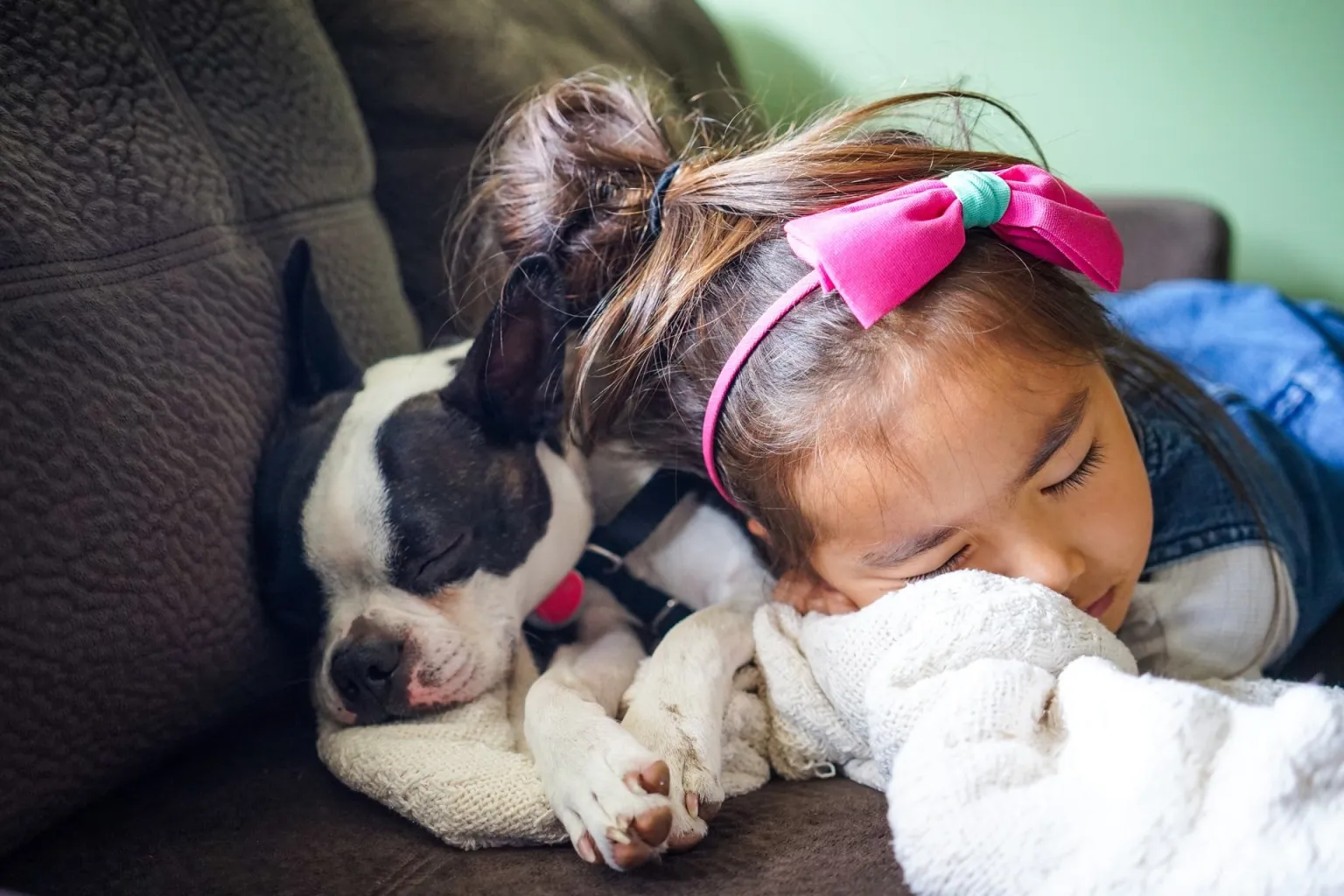Scary dreams and nightmares are a common experience for young children, making up more than 40 percent of the kinds of dreams children remember and report. Noted dream researcher Patricia Garfield observed that children have more dreams than adults do, and they tend to remember more frightening or frustrating dreams than they do pleasant or neutral ones.
Although you certainly want to comfort and reassure your child, telling them “it’s just a dream” doesn’t work. You want to let your child know that you take their experience seriously and want to hear about it. Discussing your child’s dream is like sharing a secret. You can both experience a kind of mutual adventure and closeness as you talk about the dream.
There is a real opportunity to provide support to your child in confronting fearful images and events that show up in their dreams. When you do this, your child is less likely to have those scary dreams again. Facing the fear in a dream is a way to stop the fear in both their sleeping and waking lives.
Here are 10 ways to stop the scary dreams and have fun doing it:
- Have your child share the dream speaking in the present tense, as if it is happening now. This makes it more vivid and easier to work with.
- After your child has shared a scary dream, comfort your son or daughter and be reassuring about understanding the frightening events in the dream.
- Help your child understand the difference between the reality of their fear and the fantasy of the dream events. Children’s fantasy life is an important part of their creative development, so listen carefully when it is expressed. Once you have distinguished fantasy from reality, the events in your children’s dreams can be used to find clues about how to alleviate their fears or concerns in waking life.
- After your child has shared their dream, ask him or her to give it a title. Doing this helps both of you identify the key figure or issues in the dream. For example, 8-year old Jane had this scary dream: I get off the school bus and run to our house. All of the doors are locked , and no one is home. A lady comes over and says “Sorry, your family doesn’t live here anymore.” Jane’s mother asked her what title she could give this dream, and she said “Your Family Doesn’t Live Here Anymore.” They then talked about Jane’s fear of being left alone or abandoned–a basic fear all children have at some level and a common theme in their dreams. Her Mom gave her a list of neighbors she could go to for help if she was not there. This list helped her deal with her fear, and she didn’t have this dream again.
- Add to or change the dream. Let your child know that they are the final producer of their dream, and they can edit it in any way they want. Ask questions about the scary dream characters, and imagine together what the character might say. Five-year-old Carol woke up with a scary dream about an angry monster named Angerrot. Her Dad asked why the monster was so angry, and Carol said “because he doesn’t have a house to go to.” They imagined him getting a nice house, and then he wasn’t angry anymore. In fact, Angerrot became a friendly monster who protected them and loved their family.
- Draw the dream story or scary dream character. According to art therapist Ann Wiseman, drawing a dream can help both the parent and child “leave the stuck part of them on the paper stage.” It can then be a visual reminder of how to handle the fear. Carol drew a picture of Angerrot and a lovely house for him and asked her Dad to put it on the bulletin board. Then the monster transformed from fear to a friend for her.
- Create a “dream helper.” A dream helper is a character that appears in a dream, like Carol’s transformed monster, or one that is made up to help give support in dealing with scary dreams. Our daughter named her favorite stuffed animal “Dreammie,” and he went to bed with her every night providing comfort and protection from scary dreams. Dreammie can take many forms, depending on the child’s imagination including their own pet.
- Act out the dream together. You can create a “dream theater” by acting out the dream together, letting your child direct the play and finish it however he or she wants.
- Set up a dream journal for your child. Write down your child’s dreams with them, and encourage them to draw their own illustrations in space set aside for that purpose.
- Share some of your own dreams with your children, and ask them about theirs over breakfast or at bedtime. Make it a fun activity for the whole family. Take the time to answer their questions and help them deal with whatever scary things come up for them.
Hopefully, now you see that talking with your children about their scary dreams and working on them together can be a rewarding experience for both of you. The more you do this, the more likely the scary dreams will stop and be less frightening.
Helping your children of any age to explore their dreams can teach them to appreciate and be less afraid of their inner experience. Then there won’t be anymore “bad dreams” because all dreams will be “good dreams”!
More information about how to stop scary dreams and work on them together read our book, The Dream Sharing Sourcebook. We have helped parents and their children work with their dreams for many years and would be happy to assist you. Please call the office at 434-971-4701 for a consultation or to set up an appointment in person or virtually. Dream on!







